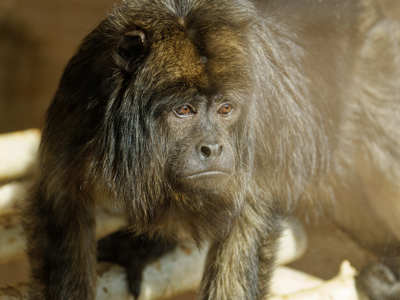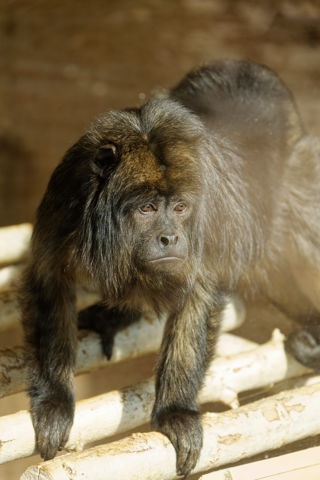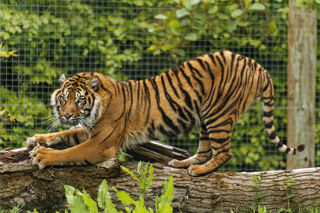
Black-and-gold howler monkey
Black-and-gold howler monkeys are New World monkeys, a term describing monkeys from South and Central America. They are sexually dimorphic, which means that males and females look different; males are black and females and juveniles are buff coloured. These monkeys have prehensile tails which are used to grip branches like an extra hand.

Black-and-gold howler monkeys have a distinctive loud call, which can be heard for one to two kilometres and is used to mark territory.
They typically live in family groups of five to eight individuals containing roughly equal numbers of males and females. Females will stay with their birth group for life with males moving out of the group when they reach maturity. The females in the group will share parenting duties, carrying and protecting other females’ infants.

They eat a diet of mostly leaves with a preference for young leaves. Although the howler monkey is the only New World monkey which will eat mature leaves. They will also eat other plant material, such as fruit and flowers.
Black-and-gold howler monkeys are widespread but with patchy distribution. There are substantial populations in protected national parks throughout their range and are considered to be Least Concern by the IUCN. The main threat is habitat loss as forest is changed to farmland. Soy farming and cattle ranching are the two most important agricultural businesses in the region.
Key Facts:
Conservation Status: Least Concern
Distribution: Central South America
Habitat: Savannah, Tropical Forest, Tropical lowland forest
Diet: Flowers, Fruit, Leaves
Height: 48 – 60cm
Weight: 4.5 – 6.5kg
Gestation: 187 days
No. of young: 1
Life Span: 30 years

SUPPORT OUR ANIMALS
If you're looking for an alternative way to donate to Twycross Zoo, you can help support our animals and our zoo keepers by purchasing something from our Amazon Wishlist!
Updated regularly by our zoo keepers, the items on the list help to provide enrichment for our animals and keep their habitats well maintained.
Every donation helps us as a conservation charity.
